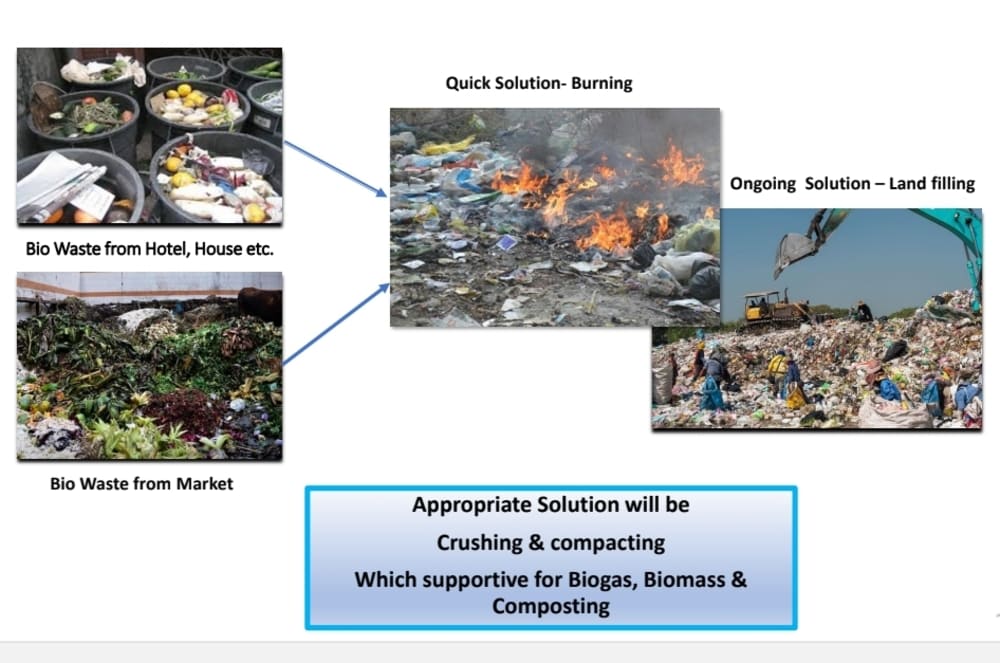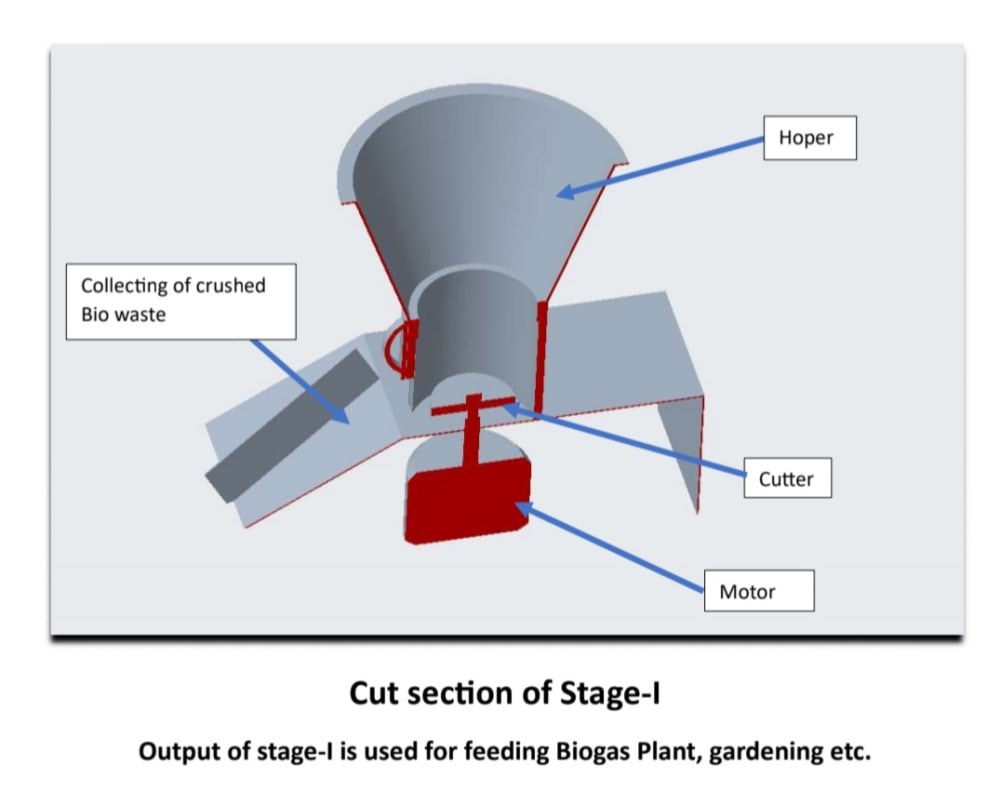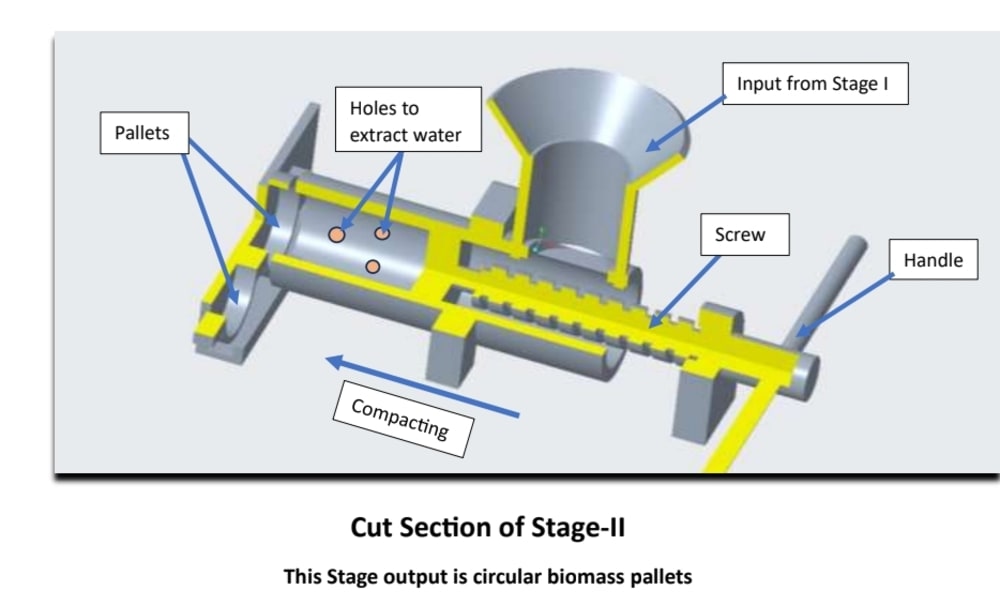Framework
My concept deals with the crushing and grinding of food or bio waste using an anticipated machine at its place. The manually operated or mechanized machine will have two stages. The first stage will involve crushing/grinding biowaste into small particles for two minutes. In the second stage, the output of the first stage will be compacted using a screw mechanism to develop thick bio pallets.
Bio/food waste is habitually generated at houses, restaurants, and marketplaces. The major content of it consists of remains of food, vegetables, and fruits. Many times, this waste is burned on the street directly, generating huge air pollution. The disposal of food loss and waste in landfills leads to greenhouse gas emissions, contributing to climate change. Proper collection of food waste is not finished in many urban and rural areas & the transportation cost is also significant. To tackle these problems, our solution is this two-stage process.
Stage First:
At the waste collection point of market places/under buildings, segregated waste (dry/wet) is directly poured into the hopper of the machine. This waste is crushed using fine cutter for two minutes, converting the bio waste into small particles, like using a blender in a kitchen. The output will be small particles/crushed waste, which may be in a wet state. This output will be valuable for i) Biogas feeding and ii) Earthworm Plants. Consequently, it will be supplied to these plants by small reusable containers.
Stage Second:
This stage involves pallet making. The output of the first machine is supplied to the second stage by gravity. In this stage, the crushed product is compacted using a screw-type mechanism. Two die pallets are kept in line in this stage, and one is used at a time to develop a pallet after screw activation. Excess water content will be removed by holes in compacting chamber. If needed, wet soil is added as a binder for compacting.
These wet pallets, after deseeding, will be used as manure in farms, reducing the dependency on chemical fertilizers and moving agriculture towards organic methods. After drying, these pallets can be used as biomass for commercial baking and home utilities, such as food cooking and heating.
The concept aims to integrate human resources to add values to waste, especially in developing economies. The working of these stages is intended for manual labor to generate employment and provide utilities in every corner of cities and rural areas, if machines are arranged on wheels. For major marketplaces, automation can be easily implemented, making the process suitable for large-scale.
Benefits of the Concept:
- Reduction in volume of waste and transportation cost
- Generation of employment
- Helps in completing the carbon cycle
- Small and constructive steps towards sustainable development, directly addressing quite a few Sustainable Development Goals (SDGs) such as Affordable and Clean Energy, Sustainable Cities and Communities, Responsible Consumption and Production, and Climate Action
- Circuitously contributes to other SDGs, including No Poverty, Zero Hunger, and Good Health and Well-Being
Like this entry?
-
About the Entrant
- Name:Milind Swami
- Type of entry:individual
- Software used for this entry:Creo
- Patent status:none








